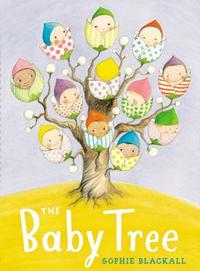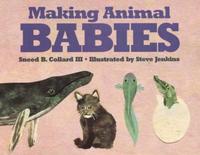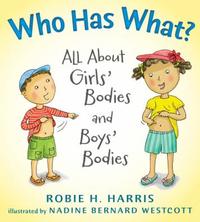Using Books to Prompt Discussion about the Birds and the Bees with Young Children
By Sarah S.This month’s children’s book reviews are written by Kate Bowman-Johnston, Children’s Librarian at the Joseph E. Coleman Northwest Regional Library in Germantown. She hosts a preschool storytime open to the public every Friday at 10:30 a.m. Check out a special dance party storytime on Friday, April 17, presented by Merge Dance Studio of Manayunk!
Spring has finally sprung – hooray!
And like the birds and bees zipping through the garden, your young child may be abuzz with questions about new life. He suddenly wants to know how exactly that baby is going to get out of his friend’s mommy’s tummy … not to mention how it got there in the first place.
Fear not. We librarians have helped many a caregiver navigate this potentially awkward topic with confidence. Here are some age-appropriate recommendations to guide your young child through the facts of life.
As always, we suggest you preview these books before sharing them with your child, so you can tailor them to your family’s needs.
The Baby Tree by Sophie Blackall
After finding out he will become a big brother, a boy receives fantastical answers about where babies come from until his parents set him straight. Whimsical illustrations accompany his journey. While this picture book is fictional, it includes an appendix with practical advice about answering reproductive questions.
Making Animal Babies by Sneed B. Collard, illustrated by Steve Jenkins
Featuring Jenkins’ distinctive cut-paper collages, this book covers reproduction across species, from the mating behavior of mammals to the asexual budding of sea sponges. The format is perfect for preschoolers and kindergartners – lots of visual detail to examine, with short but informative bursts of text.
Who Has What? All About Girls’ Bodies and Boys' Bodies by Robie H. Harris, illustrated by Nadine Bernard Westcott
Harris’s trademark frank, no-fuss approach is on display in this title, as we follow a mixed-race family through discovering physical differences between boys and girls. (Care is taken to note that “most things about boys and girls are the same. [They both] like to catch frogs,… ride scooters, and make a lot of noise.”) Every body part is labeled accurately, and we see all kinds of families demonstrating the concepts discussed in the text.
What Makes a Baby: A Book for Every Kind of Family and Every Kind of Kid by Cory Silverberg, illustrated by Fiona Smyth
Silverberg is a sex educator whose Kickstarter campaign funded publication of this quirky title, hailed for its inclusivity of queer families. It is unique among children’s books about reproduction because it uses neutral language and encompasses many different family configurations. Kids love the psychedelic illustrations, reminiscent of Todd Parr and Keith Haring, and connect with the smiles on the faces of each colorful person who is waiting for the baby to be born. Silverberg’s website has an extensive reader’s guide filled with wonderful prompts and teaching tools.
Your Body Belongs to You by Cornelia Spelman, illustrated by Teri Weidner
Although the illustrations are slightly cutesy and outdated, this book is essential to giving children authority over their own bodies. Readers are empowered to refuse unwanted contact (even hugs), recognize harmful touches, and inform adults they trust if they are uncomfortable – all without resorting to scare tactics. An informative letter to parents provides context and conversation starters.
Have a question for Free Library staff? Please submit it to our Ask a Librarian page and receive a response within two business days.



